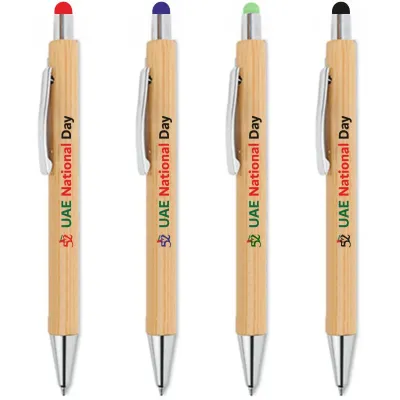Crypto and NFT Trends
Crypto and NFT Trends
The world of digital assets, including cryptocurrencies and non-fungible tokens (NFTs), has experienced unprecedented growth and innovation in recent years. From the meteoric rise of Bitcoin to the explosion of interest in NFTs, these technologies are reshaping how we think about ownership, value, and creativity in the digital age. In this essay, we will explore the current trends in crypto and NFTs and speculate on what the future may hold for these digital assets.
The Rise of Cryptocurrencies
Cryptocurrencies, led by Bitcoin, have emerged as a disruptive force in the world of finance and technology. Bitcoin, created in 2009 by an anonymous individual or group known as Satoshi Nakamoto, introduced the concept of decentralized digital currency, free from the control of traditional financial institutions. Since then, thousands of alternative cryptocurrencies, or altcoins, have been developed, each with its own unique features and use cases.
The adoption of cryptocurrencies has grown rapidly in recent years, driven by factors such as increasing institutional interest, growing acceptance by mainstream businesses, and concerns about inflation and fiat currency devaluation. Major financial institutions and corporations have begun to embrace cryptocurrencies as an asset class, with some even integrating them into their balance sheets as a hedge against inflation and currency volatility.
Moreover, the emergence of decentralized finance (DeFi) platforms has further expanded the utility of cryptocurrencies, allowing users to access a wide range of financial services, including lending, borrowing, trading, and asset management, without the need for traditional intermediaries. DeFi has democratized access to financial services, enabling individuals around the world to participate in global financial markets with greater ease and flexibility.
The NFT Craze
Non-fungible tokens (NFTs) have taken the digital world by storm, capturing the imagination of artists, collectors, and investors alike. NFTs are unique digital assets that represent ownership or proof of authenticity of a specific item or piece of content, such as artwork, music, videos, or virtual real estate, recorded on a blockchain. Unlike cryptocurrencies, which are fungible and can be exchanged on a one-to-one basis, NFTs are indivisible and cannot be replicated, making them valuable as digital collectibles.
The appeal of NFTs lies in their ability to tokenize and monetize digital content, enabling creators to generate income from their work in new and innovative ways. Artists, musicians, and other creators can mint NFTs of their work and sell them directly to collectors, bypassing traditional gatekeepers such as galleries, record labels, or streaming platforms. This has democratized access to the creative economy, allowing artists to retain greater control over their work and earn royalties from secondary sales.
Moreover, NFTs have sparked new forms of digital ownership and community engagement, with collectors forming communities around shared interests and supporting their favorite artists through NFT purchases and collaborations. Virtual worlds and metaverse platforms have also embraced NFTs as a way to tokenize virtual assets and enable users to buy, sell, and trade digital goods and services within immersive virtual environments.
The Future of Digital Assets
Looking ahead, the future of digital assets, including cryptocurrencies and NFTs, is filled with both promise and uncertainty. While the adoption of cryptocurrencies continues to grow, challenges such as regulatory uncertainty, scalability issues, and environmental concerns remain significant hurdles to overcome. However, ongoing innovations in blockchain technology, such as layer 2 scaling solutions and proof-of-stake consensus mechanisms, hold the potential to address these challenges and pave the way for broader adoption of cryptocurrencies.
Similarly, the future of NFTs hinges on the continued evolution of digital art and culture, as well as advancements in blockchain technology and virtual reality. As NFTs become more integrated into mainstream culture and commerce, we can expect to see new applications emerge, such as tokenized real estate, intellectual property rights management, and digital identity verification. Moreover, the convergence of NFTs with other emerging technologies, such as augmented reality and artificial intelligence, promises to unlock new possibilities for creativity, expression, and value creation in the digital realm.
The exponential growth of cryptocurrencies, spearheaded by Bitcoin and followed by a plethora of alternative coins or altcoins, has revolutionized financial paradigms. Bitcoin, born in 2009 under the pseudonym Satoshi Nakamoto, introduced the concept of decentralized digital currency, marking the onset of a monetary evolution. Concurrently, decentralized finance (DeFi) platforms have emerged, offering a gamut of financial services devoid of traditional intermediaries. These advancements democratize financial access globally, allowing individuals to partake in lending, borrowing, trading, and asset management with unprecedented ease.
In tandem with the cryptocurrency surge, non-fungible tokens (NFTs) have surged in popularity, igniting fervent interest across artistic, collector, and investor communities. NFTs, unique digital assets recorded on a blockchain, offer a novel means of tokenizing and monetizing digital content. Artists and creators leverage NFTs to directly monetize their work, circumventing traditional gatekeepers like galleries and streaming platforms. Moreover, NFTs foster new forms of digital ownership and community engagement, cultivating vibrant ecosystems around shared interests and supporting artists through collaborative endeavors.
Looking ahead, the trajectory of digital assets hinges on overcoming various hurdles while harnessing technological advancements and cultural shifts. Regulatory clarity, scalability enhancements, and environmental sustainability remain paramount concerns in the cryptocurrency realm. However, innovations such as layer 2 scaling solutions and proof-of-stake mechanisms hold promise in addressing these challenges. Similarly, the future of NFTs lies in their integration into mainstream culture and commerce, facilitating novel applications like tokenized real estate and intellectual property management. As NFTs converge with emerging technologies such as augmented reality and artificial intelligence, new avenues for creativity, expression, and value creation are poised to unfold in the digital landscape.
Conclusion
The trends shaping the future of digital assets, including cryptocurrencies and NFTs, are driven by a combination of technological innovation, cultural shifts, and market dynamics. While the adoption of cryptocurrencies and the rise of NFTs have already had a profound impact on finance, art, and culture, the true potential of these technologies is yet to be fully realized. As we look to the future, it is clear that digital assets will continue to play a central role in shaping the way we create, share, and exchange value in an increasingly digital and interconnected world.
Trending Categories for Promotional Products
Browse the most popular and trending products and be the part of the trendy products





















